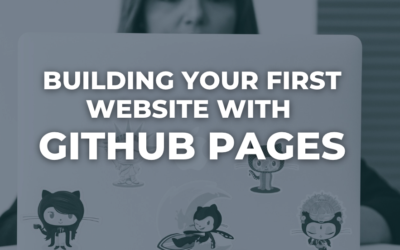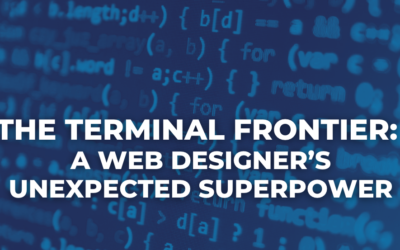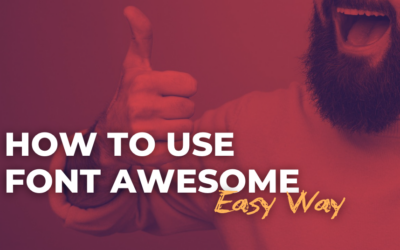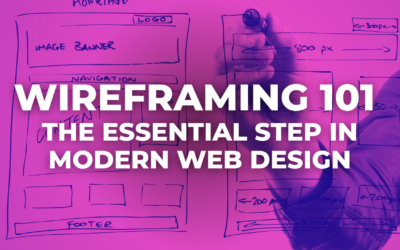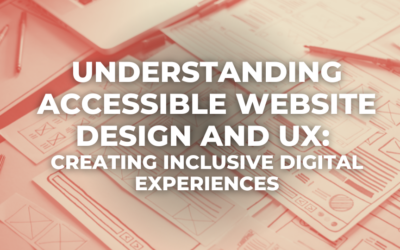Over the past five years, a handful of new CSS features have completely reshaped how we build for the web. According to the 2025 State of CSS Survey, these are the true game-changers.
Mastering Grids in UI Design: The Backbone of Visual Harmony
A modern guide to UI design grids, learn how to build flexible 12-column and 4-column systems, master margins, gutters, and modules, and apply today’s responsive layout best practices.
Understanding Mental Models for Better Web Design Practices
How can understanding mental models transform your web design process? These cognitive blueprints shape perceptions and decisions, leading to intuitive, user-centered designs.
Building Your First Website with GitHub Pages
Learn how to build and publish a simple website using GitHub Pages. This beginner-friendly guide covers each step with clear visuals, helping you launch your site quickly and for free.
The Terminal Frontier: A Web Designer’s Unexpected Superpower
Unlock hidden superpowers with essential command line skills every web designer should know. Boost efficiency, control your workflow, and gain confidence by mastering the tools behind the scenes.
Bold Minimalism Isn’t New, It’s Just Louder This Time
Bold minimalism is trending again, but it’s nothing new. Explore why this confident, clean design style is resurging, and how it’s rooted in decades of visual clarity and typographic strength.
The Relentless Utility of McMaster-Carr’s Website
McMaster-Carr’s website proves that function beats flash. Built for speed and clarity, it’s a masterclass in no-nonsense design tailored to real users who just need things to work.
Beyond the Basics: Unlocking the Real Power of CSS Pseudo-Classes
Unlock the full potential of CSS pseudo-classes. Go beyond :hover and explore powerful, modern techniques that reduce code bloat, enhance accessibility, and replace JavaScript with smarter, scalable styling.
How CX (Customer Experience) Can Combat Customer Churn
A seamless customer experience (CX) can reduce churn and boost retention. Discover essential design strategies that transform frustrating user journeys into engaging, personalized experiences that build loyalty and trust.
Is Graphic Design Dead?
Graphic design isn’t dead, it’s evolving. Inspired by a Threads post, this piece dives into the art vs. design debate, AI’s impact, and why selling your value matters.
Why Some Clients Think They Know Design (And How to Keep the Project on Track)
Ever wonder why some clients over-explain or dodge your questions? Learn how to navigate unclear client communication and keep your design projects on track with practical, experience-based strategies.
Finding Fresh Design Inspiration
Seeking fresh web design inspiration? Explore these top sites that ignite creativity and keep you trend-savvy, while non-traditional sources open new creative pathways.
How to use Font Awesome, The Easy Way
Really quick tutorial and code snippets on using Font Awesome on a web page.
Stop Letting Your Inbox Control You – Strategies for Managing Work Emails
Constantly responding to emails drains productivity and fuels burnout. Set boundaries, manage expectations, and reclaim focus with intentional email habits. Prioritize deep work over urgency and take control of your inbox.
Website Scanning Patterns for Maximum Engagement
Discover how users visually process websites, the role of scanning patterns, content placement, and “the fold” Learn to design engaging pages with fast-to-consume content that aligns with user behavior.
Why Are Wireframes in Web Design So Important?
Wireframes are the blueprint of web design, aligning goals, improving UX, and saving time. Discover why these visual structures are essential for creating intuitive, user-focused, and efficient websites.
Sign-Up: Enhancing Conversions through good UX
Optimize your website’s sign-up process by focusing on clarity, ease, and user mindset. Clearly explain the purpose, benefits, and steps, and use social proof to build trust and drive conversions.
Understanding Accessible Website Design And UX: Creating Inclusive Digital Experiences
Accessible website design is essential for ensuring equal online access for individuals with disabilities. By following W3C’s POUR principles, designers can create inclusive, user-friendly websites that work across devices and assistive technologies.




